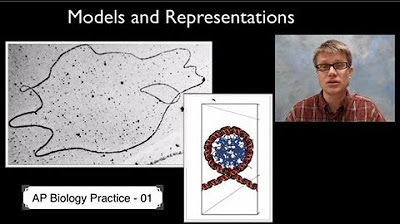Solid Waste
Summary
TLDRIn this AP environmental science video, Mr. Andersen discusses the rise of solid waste post-industrialization and its environmental impact. He covers types of waste, including municipal, e-waste, and hazardous, and regulations like RCRA and Superfund Act. The video emphasizes reducing waste through the three Rs: reduce, reuse, recycle, and composting. It also touches on proper landfill construction and waste-to-energy systems.
Takeaways
- ♻️ Waste in the natural world is often reused, as seen with dung beetles using elephant dung for food.
- 🛠️ Human waste production increased significantly after industrialization and World War II, leading to a throwaway society.
- 🏭 Municipal solid waste (MSW) is composed of paper, plastics, wood, yard clippings, metals, and more.
- 📱 E-waste includes discarded electronics like computers, phones, and TVs, often exported to developing countries with poor health standards.
- ⚠️ Hazardous waste can cause human illness and environmental degradation, regulated by laws like RCRA and CERCLA (Superfund Act).
- 🏗️ Waste disposal methods include landfills and incineration, but reducing, reusing, and recycling waste is preferred.
- 🌿 Composting is a key method of recycling nutrients from organic waste, reducing landfill waste.
- 🛒 Reuse strategies include repurposing items (e.g., using an old electrical coil as a table) or donating to organizations like Goodwill.
- 🚗 Companies like Subaru have adopted zero-landfill policies, recycling and reusing materials, and incinerating the remainder for energy.
- 🗑️ Modern landfills are carefully constructed with clay or plastic linings to prevent leaks, methane capture systems, and compacting processes to minimize decomposition.
Q & A
What is the main difference between waste in the natural world and human-generated waste?
-In the natural world, waste is not wasted; it is reused by organisms like dung beetles. In contrast, human-generated waste, especially post-industrialization, is often not reused or recycled, leading to large amounts of waste filling landfills.
What are the major types of municipal solid waste (MSW)?
-The major types of municipal solid waste (MSW) include paper, plastics, wood, yard clippings, and metals. E-waste, such as discarded electronics, and hazardous waste, which poses human and environmental risks, are also important categories.
What are the key regulations related to hazardous waste?
-The key regulations for hazardous waste are the Resource Conservation and Recovery Act (RCRA), which regulates hazardous materials from creation to disposal, and the Superfund Act (CERCLA), which addresses large-scale hazardous waste clean-ups.
How has municipal solid waste in the US changed over time?
-Municipal solid waste in the US has increased from 88 million tons in 1960 to approximately 251 million tons today, although it is starting to level off due to increased recycling efforts.
What are the two types of recycling mentioned in the script?
-The two types of recycling are closed-loop recycling, where materials like aluminum cans are recycled into the same product, and open-loop recycling, where materials like plastic bottles are recycled into different products, such as polar fleece jackets.
What is composting and how does it help reduce waste?
-Composting is the process of breaking down organic materials, like yard trimmings, into nutrient-rich soil. It helps reduce the amount of waste going into landfills and recycles nutrients back into the environment.
What is the significance of the Love Canal incident in the context of hazardous waste?
-The Love Canal incident highlighted the dangers of improperly disposed hazardous waste. It led to the creation of the Superfund Act (CERCLA) to clean up hazardous waste sites and hold responsible parties accountable.
What is the best way to minimize waste according to the video?
-The best way to minimize waste is through the three Rs: reduce, reuse, and recycle. Reducing waste from the source is the most effective, followed by reusing items and recycling when possible.
How do landfills manage hazardous waste and prevent environmental contamination?
-Landfills manage hazardous waste by lining them with materials like plastic or clay to prevent leakage. Leachate systems are installed to recover any water that leaks out, and pipes are used to vent methane gas produced during decomposition.
What is the concept of 'waste-to-energy' and how is it used?
-Waste-to-energy refers to incinerating waste to produce energy. This process is used as a last resort to reduce landfill use and generate power from the waste that cannot be recycled or composted.
Outlines

このセクションは有料ユーザー限定です。 アクセスするには、アップグレードをお願いします。
今すぐアップグレードMindmap

このセクションは有料ユーザー限定です。 アクセスするには、アップグレードをお願いします。
今すぐアップグレードKeywords

このセクションは有料ユーザー限定です。 アクセスするには、アップグレードをお願いします。
今すぐアップグレードHighlights

このセクションは有料ユーザー限定です。 アクセスするには、アップグレードをお願いします。
今すぐアップグレードTranscripts

このセクションは有料ユーザー限定です。 アクセスするには、アップグレードをお願いします。
今すぐアップグレード関連動画をさらに表示

AP Environmental Science Unit 2 Review (Everything you Need to Know!)

APES Video Notes 1.1 - Ecosystems

AP Biology Practice 6 - Scientific Explanations and Theories

How to Write the Experimental Design FRQ on the AP Environmental Science Exam

AP Biology Science Practice 1: Models and Representations

AP Biology Practice 3 - Formulate Questions
5.0 / 5 (0 votes)
